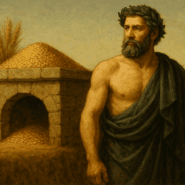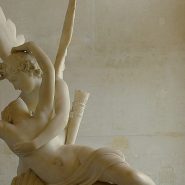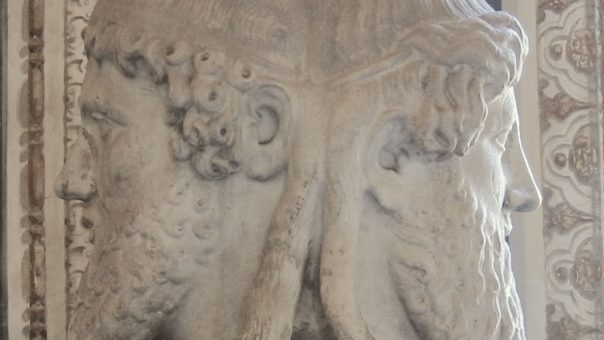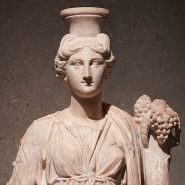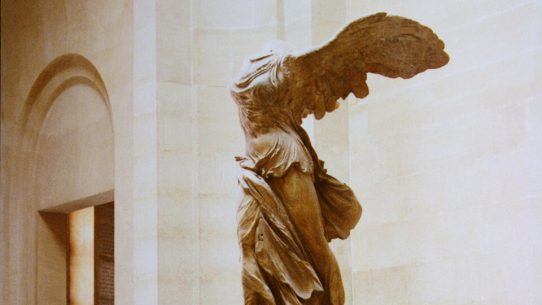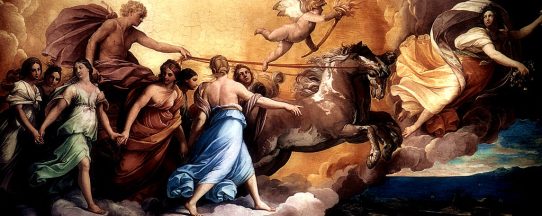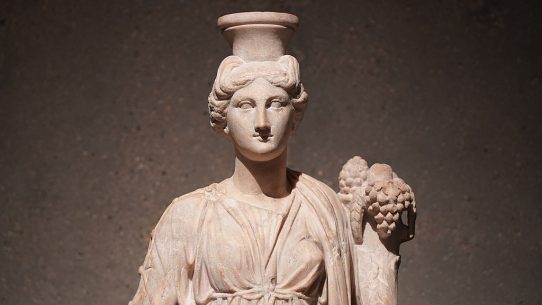Janus, the two-faced god of beginnings, endings, and transitions, was one of the most uniquely Roman deities.
Unlike the gods borrowed from Greece, Janus was entirely native to Rome — a symbol of passage and change in every form. He presided over doorways, thresholds, gates, and all forms of transformation, both physical and spiritual.
Every journey, decision, and new endeavor began with an invocation to Janus, for he governed not only the movement of time but the opening of possibilities. His image, looking both forward and backward, reminded the Romans that wisdom lies in reflection as much as in progress.
Name and Origin
The name “Janus” is derived from the Latin word ianua, meaning “door” or “gateway.” He was among the earliest gods worshipped in Rome, long before the introduction of Greek mythological influence.
While many Roman gods were associated with specific forces or realms, Janus represented a concept — transition itself. He was the god of passages, from one year to the next, one state to another, and even from life to death.
His dual nature embodied balance: one face gazing into the past with memory, the other into the future with foresight. In this way, Janus personified the eternal flow of time and change.
Attributes and Symbols
Janus was depicted with two faces, each facing opposite directions, symbolizing his dominion over beginnings and endings.
In his right hand, he often held a key, representing his authority to open or close, and in his left, a staff or rod, signifying guidance and protection. Gates, arches, and doorways were sacred to him, as were thresholds of homes and cities.
The month of January — Ianuarius — was named in his honor, marking the opening of the year and the renewal of time. His symbols were simplicity itself: the open door, the sunrise, and the journey begun with reverence and reflection.
Family and Relationships
Janus’s origins were mysterious, and ancient Roman writers offered varying accounts of his family. Some said he was born from Chaos, the first ordering force of creation; others claimed he was the son of Uranus and Hecate.
According to legend, he ruled Latium during a time of peace and abundance, welcoming the exiled Saturn after his fall from power. Together, they established civilization and the first laws of agriculture and society. Janus’s consort was sometimes named Camese or Jana, a goddess of growth and renewal who mirrored his dual nature. Their union symbolized the meeting of beginnings and continuity — the essence of Roman order.
Myths and Stories
Janus appeared not in dramatic myths of war or romance, but in the quiet moments that framed them: the beginnings and endings that defined fate.
One story tells that when Romulus founded Rome, he built a shrine to Janus on the Forum’s edge. The doors of this shrine, called the Ianus Geminus, were kept open in times of war and closed only when peace reigned — a rare occurrence in Rome’s long history.
Another tale tells of Janus granting hospitality to Saturn, teaching Romans that every new age begins with welcome and wisdom. His myths, though few, reflected his role as mediator between worlds — the guardian of all thresholds, divine and mortal alike.
Domains and Powers
Janus ruled over beginnings, transitions, movement, and time. His power was invoked at every opening — of doors, gates, journeys, or enterprises. He was also god of choice and change, guiding mortals through transformation.
As the overseer of motion and renewal, he governed not only the physical world but the inner passages of thought and purpose. Every prayer, no matter to which god it was addressed, began with an invocation to Janus, for he opened the way between humans and the divine.
His dominion encompassed both creation and closure, reminding Romans that every end carries within it the seed of beginning.
Philosophy and Moral Influence
To Roman thinkers, Janus represented continuity — the understanding that life moves through cycles rather than lines. He was the god of perspective, teaching that the future cannot be navigated without wisdom from the past.
Philosophers saw him as a divine embodiment of time and consciousness: one face reflecting memory, the other anticipation. His image encouraged moderation, foresight, and patience — virtues central to Roman governance and civic life.
In Janus, the Romans saw the mirror of their own history: a people forever moving forward, yet bound by reverence for what came before.
Temples and Worship
Janus’s most famous temple, the Ianus Geminus, stood in the Roman Forum near the Curia. Its doors, the porta Ianualis, were opened during war and shut only in peace. Inside burned an eternal flame, symbolizing vigilance and the ongoing march of time.
His worship was integral to daily life — every doorway, whether of home or city, was sacred to him. Offerings of wine, honey, and cakes were made at the start of each month, and his festival, the Agonalia in January, marked the year’s renewal with prayers for prosperity and harmony.
He required no elaborate rituals; a simple acknowledgment at the threshold of action was enough to honor his divine presence.
Legacy and Cultural Influence
Janus’s legacy endures in every conception of time, passage, and reflection. His two faces have become universal symbols of duality and transition — the balance between past and future, wisdom and progress. The month of January, named for him, still carries his spirit as the portal to a new year.
Artists and philosophers alike have invoked him as the guardian of thresholds, the measure of all beginnings. In his calm dual gaze, humanity recognizes its own nature: ever looking backward to learn and forward to hope.
Through Janus, Rome gave the world a timeless symbol of change that governs both history and the human heart.
Unique Traditions and Notes
At dawn, Romans often offered prayers to Janus before leaving their homes, asking him to bless the day’s beginnings. Builders invoked him before laying the first stone of a temple or gate. Even emperors sought his favor before wars or decrees, believing his guidance ensured wise beginnings.
In philosophy, Janus came to represent the duality of existence — the tension between what was and what might be. His temples faced east and west, mirroring sunrise and sunset, and his worship reminded all Romans that life itself is a series of sacred thresholds to be crossed with reverence and courage.
Adapted from public-domain materials, including Project Gutenberg and Wikisource.

